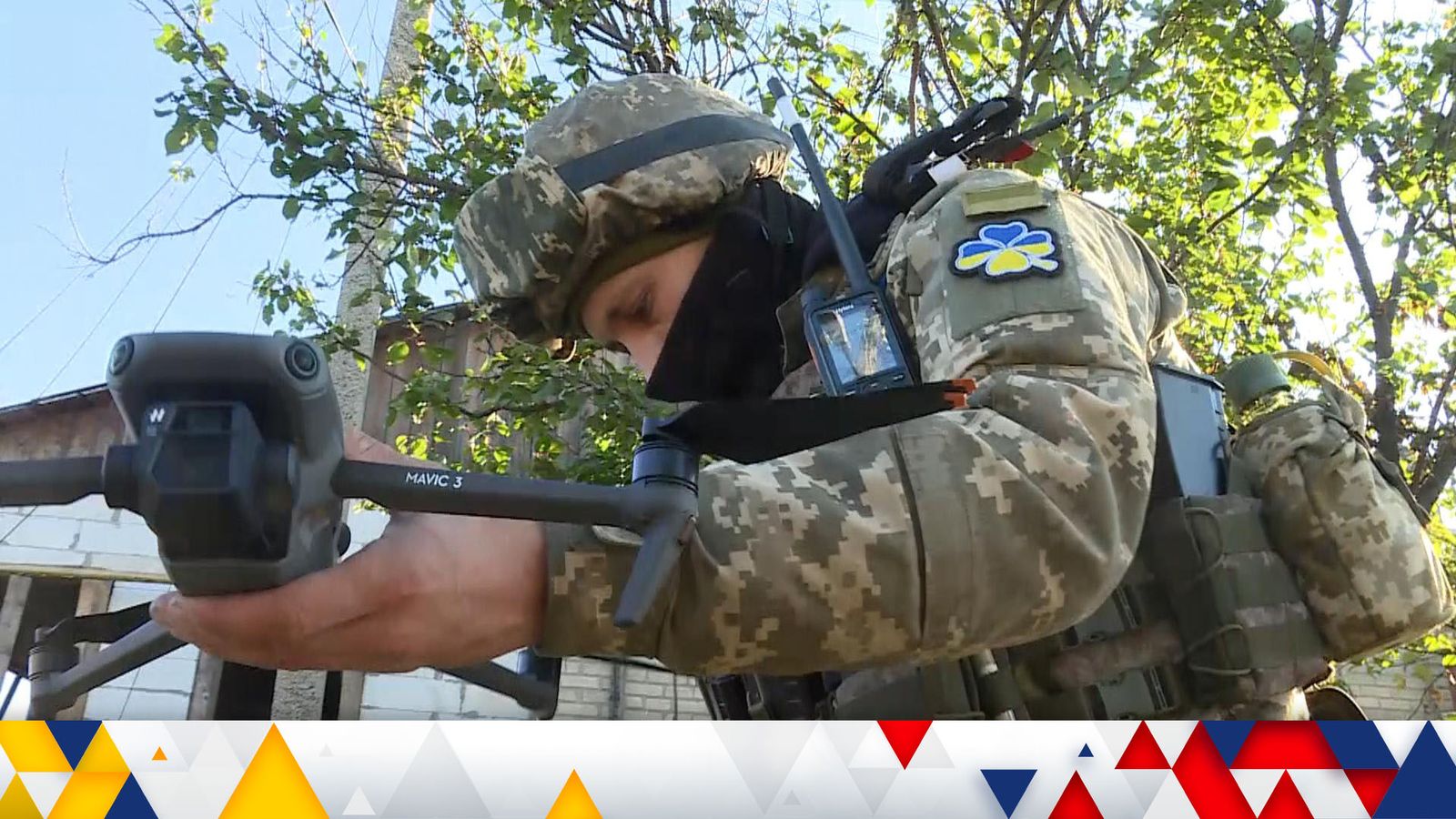The city of Bakhmut has come under continuous attack over the past four weeks but the Ukrainians are finding new ways to defend it.
We met a small group of men providing a vital perspective on this fight and they do it with compact, off-the-shelf drones.
They assembled their equipment in the shadows of one battered neighbourhood – a task they undertook with some speed. If spotted, the Russians may have called in an artillery strike.
Putin facing ‘inevitable defeat’ in southern Ukraine – latest war updates
“We’re pretty close to the front line, about 1km to 1.5km away, but still there are places here to hide for us, where we won’t be visible,” said a pilot and former engineer called Dan.
“There’s a direct view of the sky above the battleground here. We need a direct connection to the drone.”
There is a do-it-yourself feel to this aerial team who tackle their objectives in unconventional ways.
Ukraine war: What is a ‘dirty bomb’ and is Russia planning to blow up the Nova Kakhovka dam?
Russian claims Ukraine could use ‘dirty bomb’ dismissed by West and branded ‘nuclear blackmail’
Russia Today presenter accused of inciting genocide after saying Ukrainian children should have been drowned
For Dan, that included learning how to fly.
He picked up the skill by doing an online course, then told his unit commander that it could come in useful.
The drones themselves were donated by Ukrainian volunteers and there is one particular donor who has covered their internet subscription.
Dan says his girlfriend has paid for their satellite-based internet service, offered by Elon Musk’s Starlink company.
In comparison, the Russian approach to war is far more hierarchical.
“I think the main difference is that we are more flexible, (there is) more of a horizontal (structure), especially when we come from civilian life. Our commander cannot say that he is smarter than us. We know the answers to some questions,” says Dan.
A soldier ran into the middle of the road and set the drone down and we watched it climb into the sky.
From a position under a large clump of trees, the former engineer flew it up to the frontline. It is a delicate business, as both sides try to bring them down with electronic jamming systems.
‘We’ve lost two drones already’
“We don’t fly over their positions, because there is a huge chance to lose the drone, because of (their) radio frequency obstacles. It’s happened this month, we’ve lost two drones already.”
Dan and his team spent 20 minutes or so, scanning the other side – the images were live-streamed to his commander in another part of the city.
They looked for evidence of a Russian infantry advance and if they had spotted one, the coordinates would have been available immediately. But Dan told us the situation was uncommonly quiet.
“We’ve just seen the general picture, nothing’s coming.”
Yet there is little doubt that these ad-hoc aviators are making a significant contribution to Ukraine‘s war effort.
“You know (our) commander doesn’t have access to a satellite, so we provide the information to him. You can’t rely on anyone else’s help. When you ask another unit, they might be too busy.”
The Ukrainians are finding new ways to fight a mighty aggressor and their unfussy ingenuity will be studied for years to come.







